For performance testing I have reconfigured the restriction bench used for the radiator testing. In fact this test bench was initially set up for for pump and pump top testing over 18 months ago, so it didn’t take much to get it set up again to test the Revo D5 pump top’s performance.
Basically the test set up remains the same.
Essentially these tests measure the flow rate and pressure output of the pump. By comparing the results of the same pump fitted to different tops we can make an assessment of the top’s performance by comparing it’s results to others.
To test pumps we use a flow meter and a differential manometer and vary restriction by adjusting a brass gate valve. We adjust the gate valve to give different flow points and measure the pressure “gain” across the pump using the differential manometer. To better understand how to read these plots check out this guide.
As I used the Aqua Computer D5 USB pump for previous D5 top testing we decided that it should be used again so any previous results can be used for comparisons.
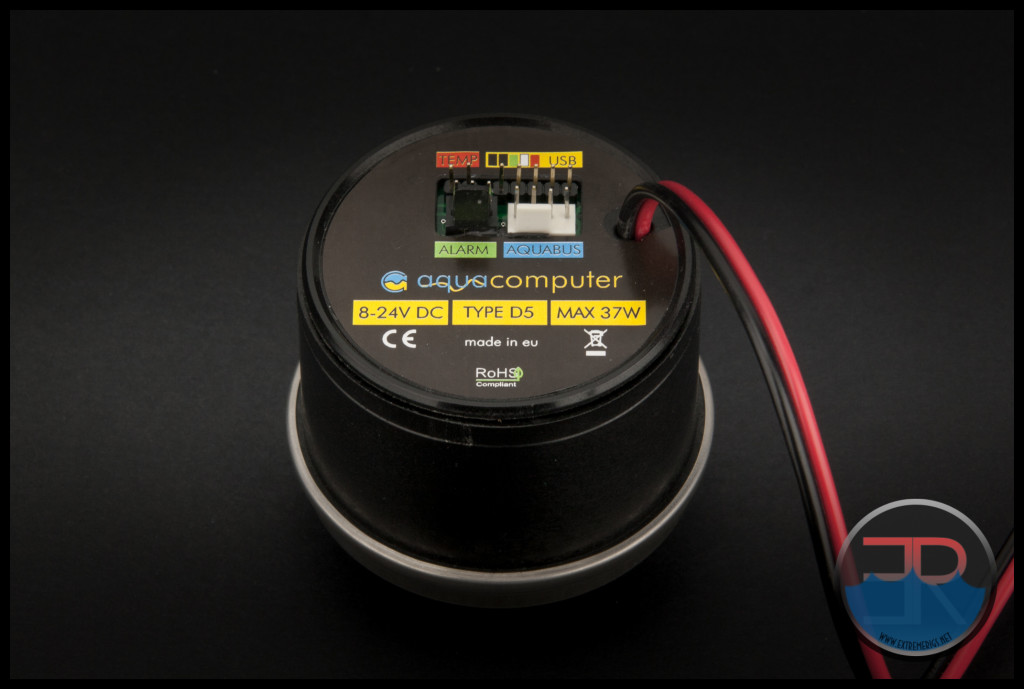 This version of the D5 pump is an electronically controlled Vario which is able to have the power adjusted via Aqua Computer’s Aquasuite software. The USB connection was hooked up to a laptop for varying the power to the pump. Minimum power level is 25% and maximum is 100%. I decided on 5 power levels to test: 25%, 40%, 60%, 80% and 100%
This version of the D5 pump is an electronically controlled Vario which is able to have the power adjusted via Aqua Computer’s Aquasuite software. The USB connection was hooked up to a laptop for varying the power to the pump. Minimum power level is 25% and maximum is 100%. I decided on 5 power levels to test: 25%, 40%, 60%, 80% and 100%
The first test performed had the top orientated as if in a floor mounted scenario (as per the previous photo), with the inlet port horizontal and the outlet port being vertical.
The raw data is of less interest than the overall plots. Therefore we’ve hidden the raw data with a spoiler tag.
Here is the plot of that data which tells us the output from the pump / pump top in PSI @ GPM with some slight extrapolation added to continue the plot curves
Here we see the 25% power setting is virtually useless with little more than 0.5 PSI being generated even at the maximum possible flow rate. Even the 40% setting would not be suitable in very many circumstances. It’s interesting that each of the 60%, 80% and 100% plots have the two distinct plateaus where performance is almost steady for a couple of data points.
Now if we add on the power consumption for each data point we can get a feel for the pump/top efficiency:
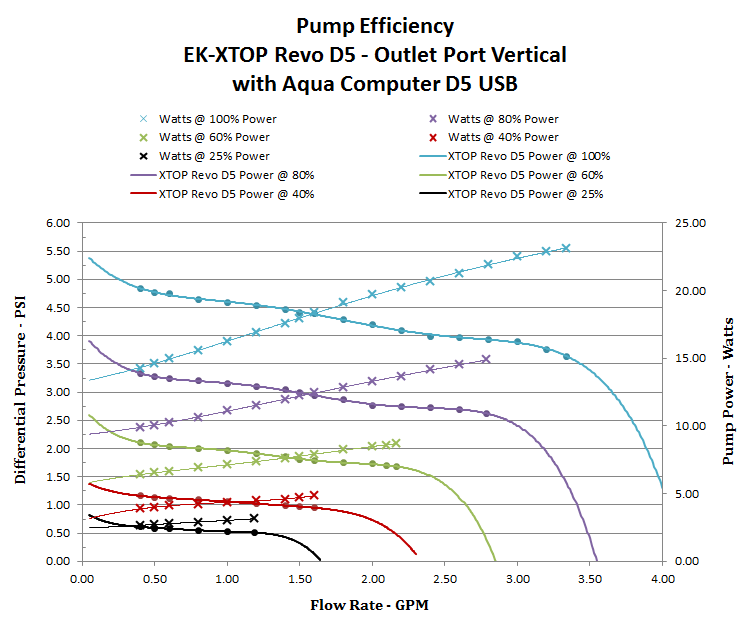 Here we clearly see the sweet spot for the 3 higher power settings is with a flow rates of between 0.5 and 2.0 gpm.
Here we clearly see the sweet spot for the 3 higher power settings is with a flow rates of between 0.5 and 2.0 gpm.
In the next plot existing data from previous EK D5 top testing has been added for comparison with the Revo pump top’s results:
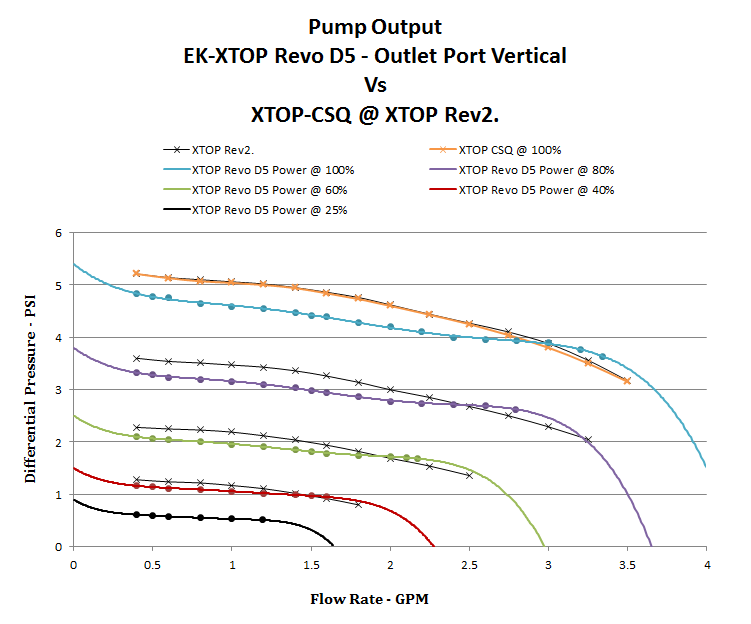 With a difference of up to 0.5 PSI at 100% power setting, the Revo D5 pump top does not look to have the output of previous generation of EK D5 tops. (Note that I never fully tested the CSQ top because the 100% power test result was a near perfect match to the Rev 2. results, CSQ was a cosmetic upgrade with no change in performance).
With a difference of up to 0.5 PSI at 100% power setting, the Revo D5 pump top does not look to have the output of previous generation of EK D5 tops. (Note that I never fully tested the CSQ top because the 100% power test result was a near perfect match to the Rev 2. results, CSQ was a cosmetic upgrade with no change in performance).
Stren also did performance testing on the CSQ D5 Top with a Vario pump, on a different test bench and half way around the world. Our results do differ slightly (although the XTop Rev 2 and CSQ are again almost identical) and one can only guess that different set-ups and pumps are part of the reason for the differences in results.
Having seen the differences between Stren’s and my results I began to think about other possible reasons for the varying results. Perhaps it was pump orientation and the direction that the ports were facing. With not much effort I could reconfigure my test bench to have the inlet port facing vertical and the outlet port horizontal, such as an installation with a reservoir mounted directly above the top.
I can’t say that I expected the output to differ greatly from the results we just reviewed, but I couldn’t recall seeing data on the inlet ports orientations being different so I decided to run the full set of tests to gather the data.
Note: a more apt description on the plot titles would have been “Inlet Port Vertical” to avoid confusion with simply having rotated the top to have the outlet horizontal while still having the inlet port horizontal.
Just to be clear, if you see “Outlet Port Horizontal” it means the Inlet port was vertical.
Again the we have spoiler’d the Raw data
Let’s take a look at the performance output plot generated from the Raw data with the inlet port vertical.
A quick look at pump efficiency should provide some evidence if there is much difference between the different orientations.
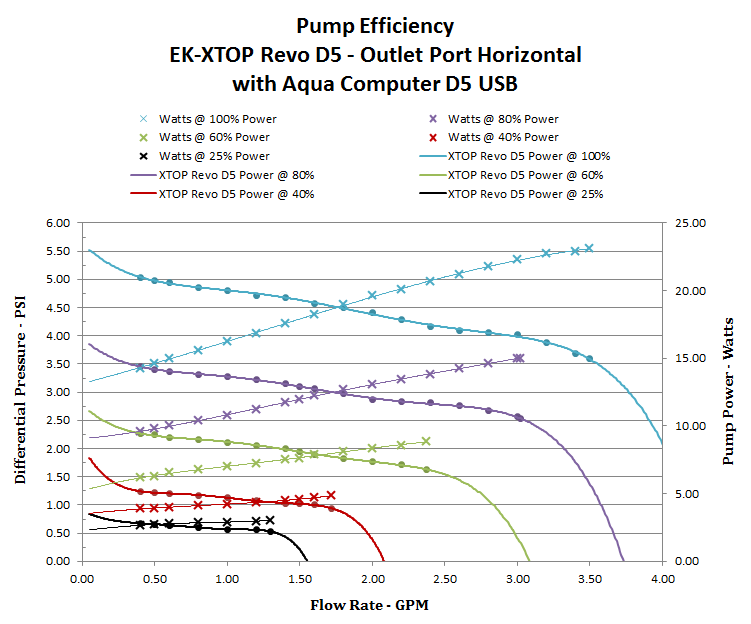 And indeed it does, with a horizontal input we saw the power use and pump output lines crossing at about 1.5 gpm on the 3 higher power settings. The cross over has moved further to the right now, offering a larger range of efficient pump power usage.
And indeed it does, with a horizontal input we saw the power use and pump output lines crossing at about 1.5 gpm on the 3 higher power settings. The cross over has moved further to the right now, offering a larger range of efficient pump power usage.
Now let’s compare output data between the differing inlet port orientations.
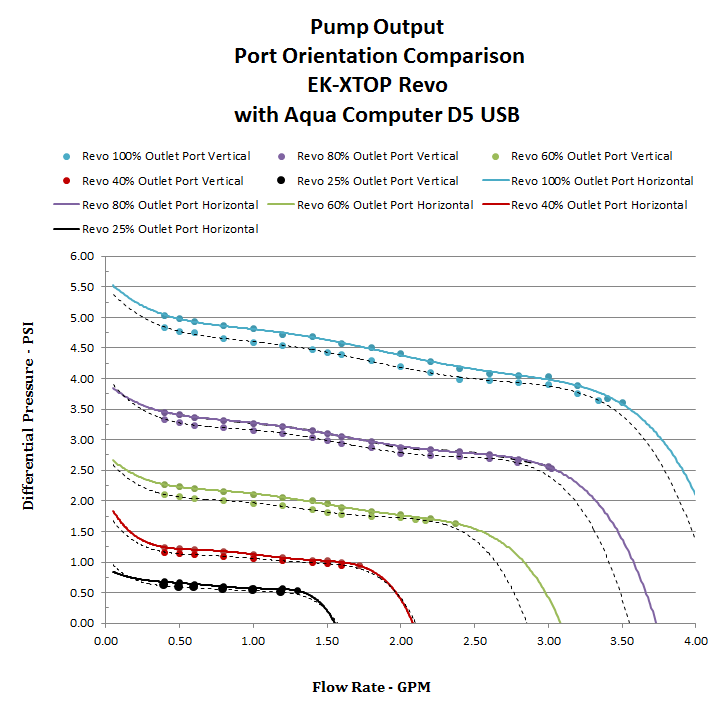 The Vertical Inlet results have the solid colored lines and what a nice little performance boost we get just by orientating the pump top a different way.
The Vertical Inlet results have the solid colored lines and what a nice little performance boost we get just by orientating the pump top a different way.
Let’s see if these results now match the previous generation D5 tops from EK.
Here we have simply placed the Rev 2. D5 Top data on top of the chart with both the Revo Top’s results.
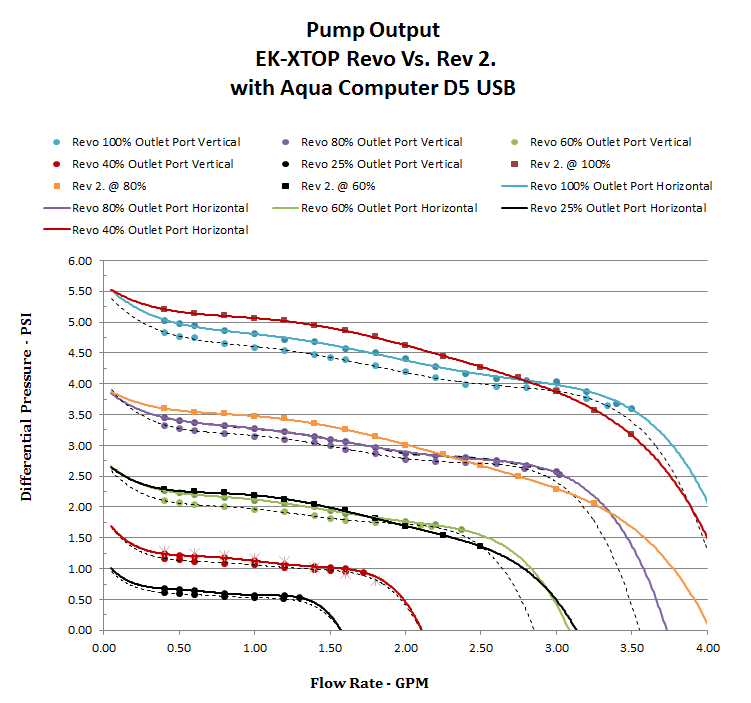 No, The Rev.2 (and therefore also the CSQ) still has the better performance, at least for the vast majority of PSI @ GPM combinations tested.
No, The Rev.2 (and therefore also the CSQ) still has the better performance, at least for the vast majority of PSI @ GPM combinations tested.
It may be worth noting that I believe that both the Rev.2 and CSQ tops were tested with horizontal inlets. The following image is all I could locate to try and confirm this belief.
One final plot before we move on towards a summary. This time we put the Revo results up against the Laing stock top fitted to our trusty USB D5. This should show us clearly the improvement a good aftermarket top such as the Revo can make vs. a stock pump top.
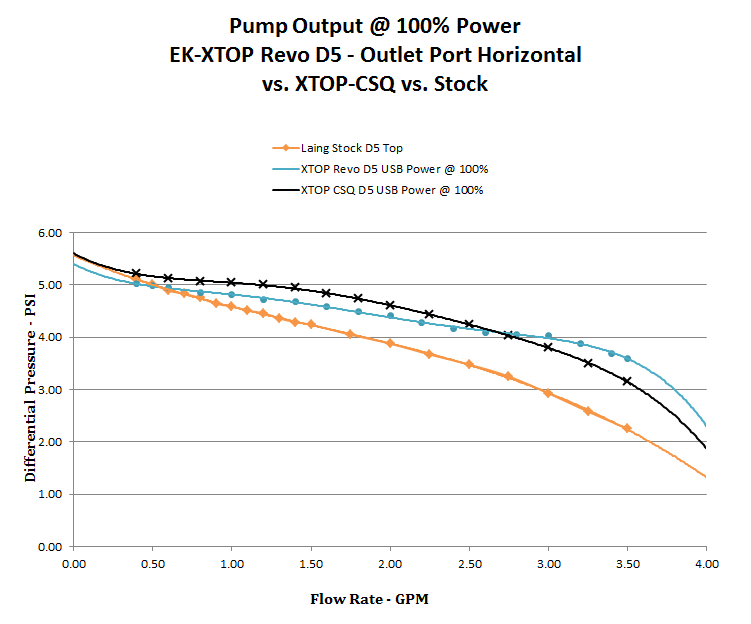 So the Revo top performs well, very well in fact with a great performance increase over the stock D5 top, it just couldn’t outperform the previous generations of D5 tops from EK.
So the Revo top performs well, very well in fact with a great performance increase over the stock D5 top, it just couldn’t outperform the previous generations of D5 tops from EK.
Next up – Summary.








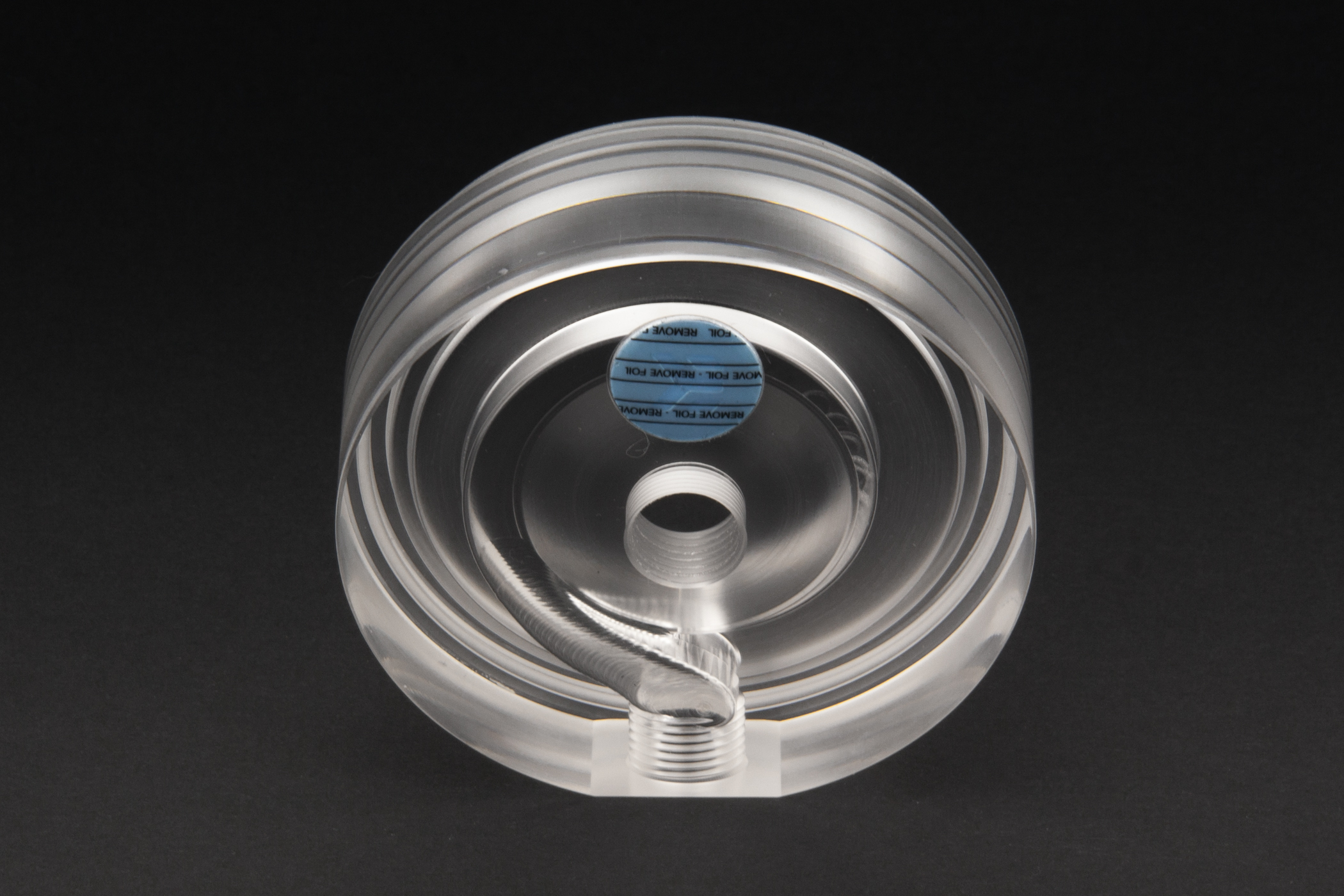
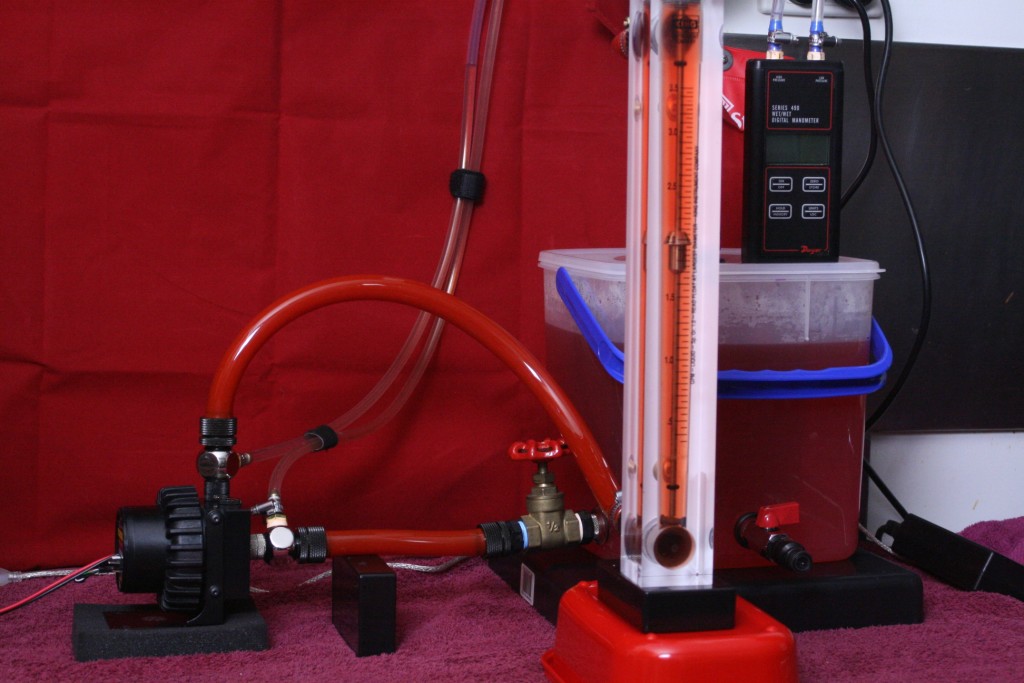
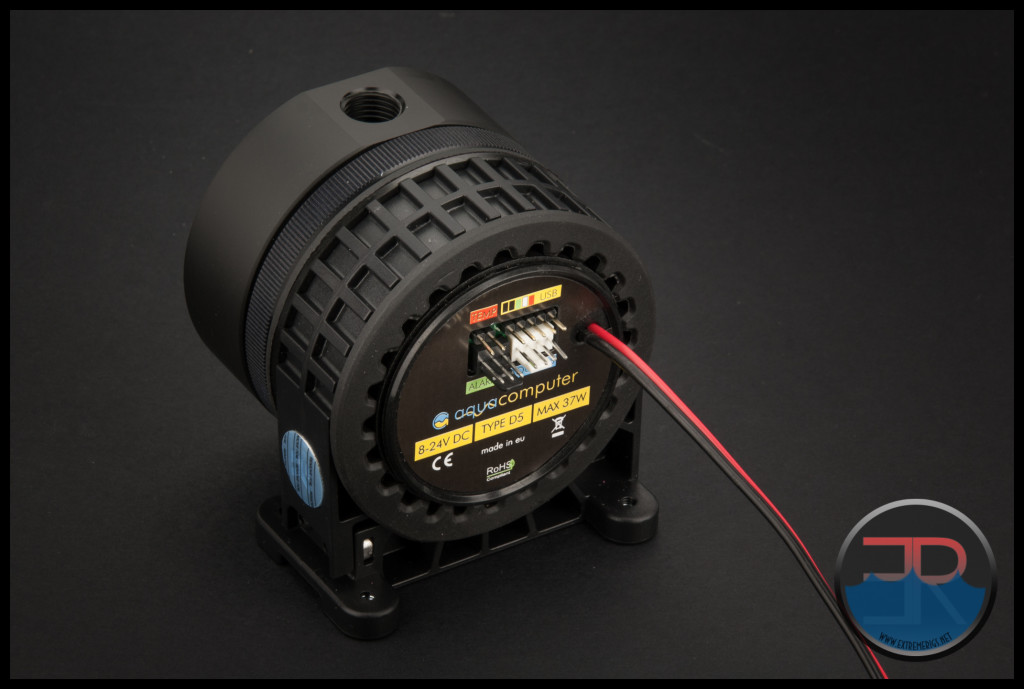
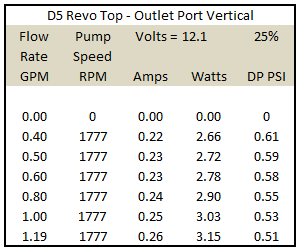
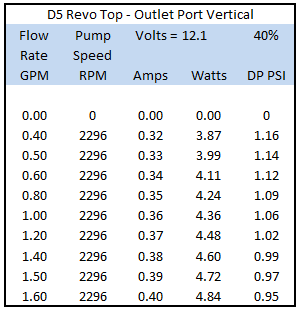
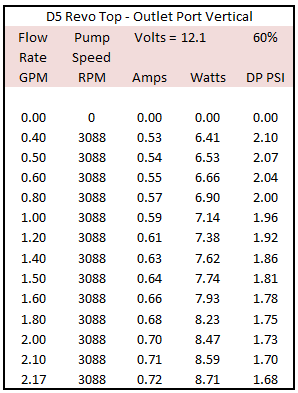
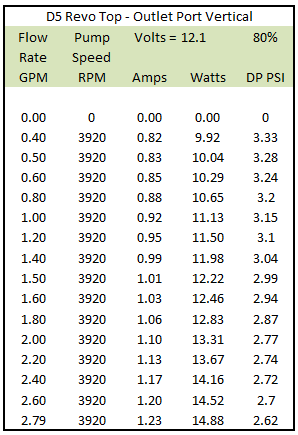
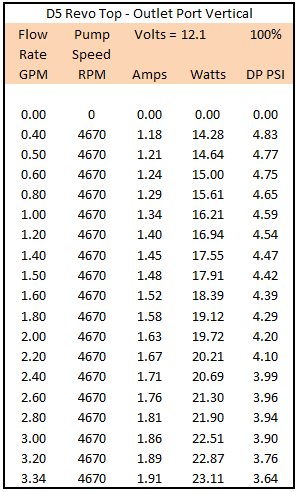
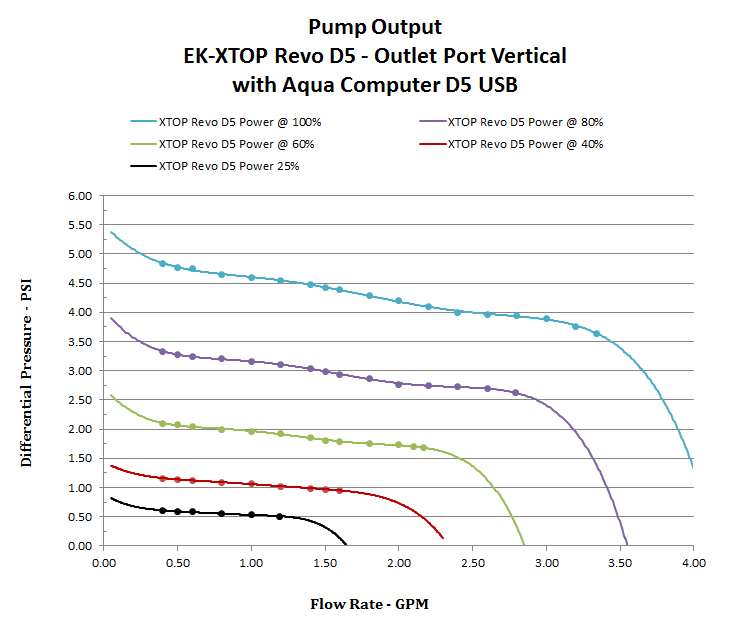
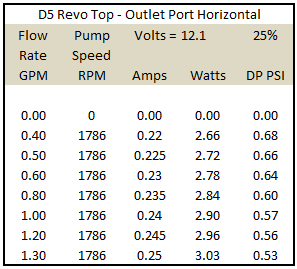
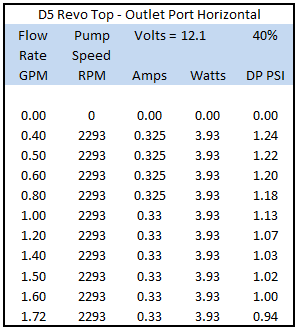
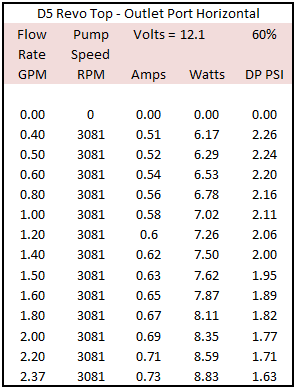
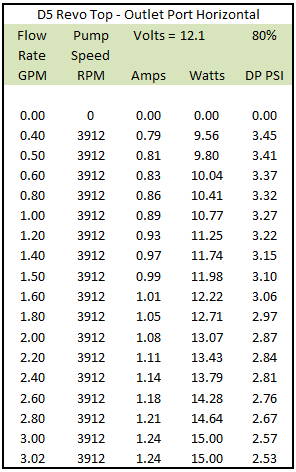
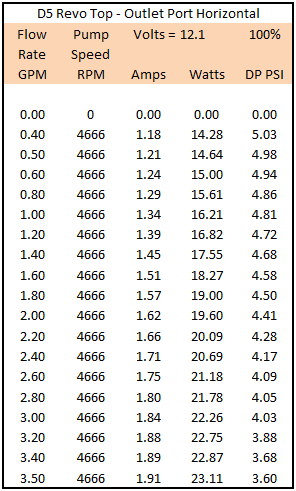
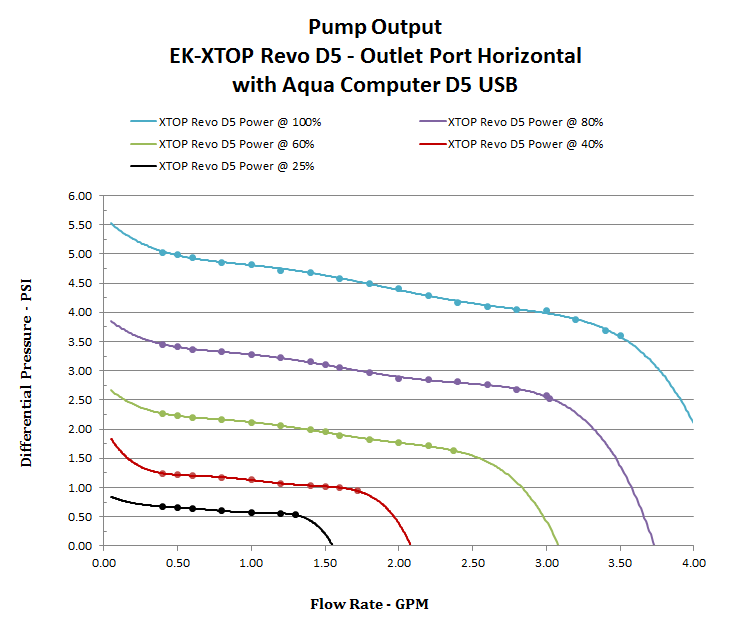
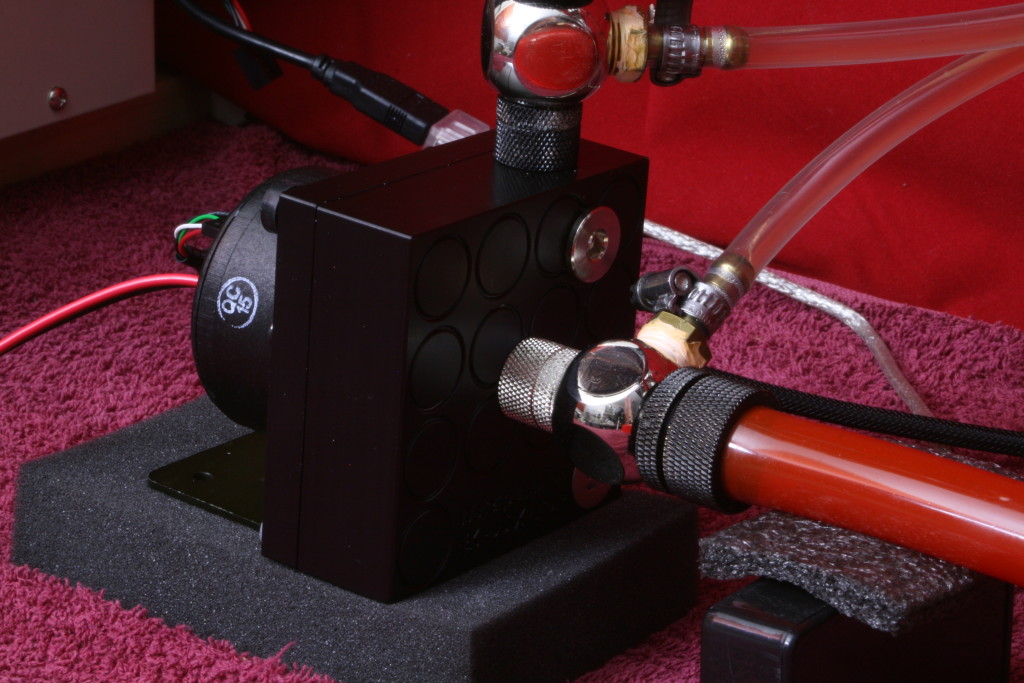



Nice work as usual. Lots of great detail.
I’m starting to get used to being disappointed with new gen EK gear. I guess at least it still outperforms the stock top still unlike some other brands. I have been buying square Xtops while they are still available. Got a white one, just need a clear to finish off the collection.
I am not a fan of screw on pump clamps. I know it is fine and simply mimics the stock type but I much prefer the fool proof security of the bolted down clamp. The new mounting system for the pump body with the rubber insert is a genuine step forward but the rest feels like steps back to me.
agree 100% with the look of the mount, smooth would have been better, and better still would have been = or better performance without just a focus on looks.
I agree 100%, too. Minimal performance hit for a different look. No thanks. I want performance gain. Doesn’t that sell?
Can you test the Dual D5 Revo vs the Dual D5 CSQ?
It has been requested from EK, hopefully they approve.
I also would like to see a review of the Dual D5 Revo. (I have the previous EK Dual D5 series pump head unit which performs excellently and is installed in my Mercury S5. But I am designing an SMA8-A build in which I am considering to use the new dual pump head.)
Comments are closed.